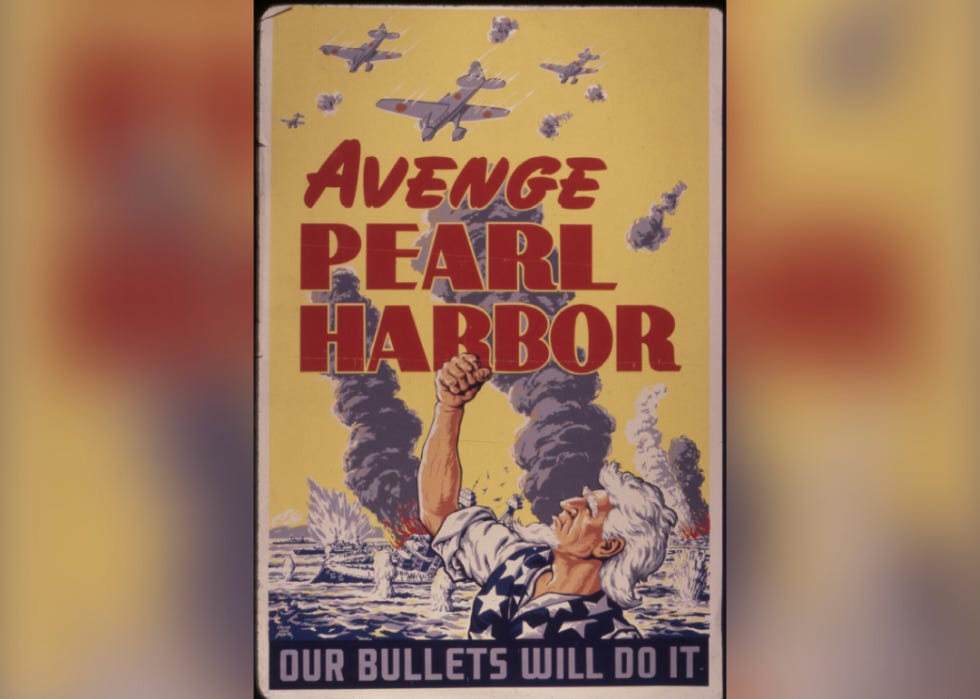8 / 30
Smith Collection/Gado/Getty Images).
‘Avenge Pearl Harbor’
This dramatic call to arms asks Americans to take action following the Japanese attack on the U.S. Navy on December 7, 1941. With Uncle Sam raising his fist at warplanes overhead, the appeal marked a key moment in the war when Americans became motivated to spurn isolationism and join the cause.
9 / 30
David Pollack/Corbis // Getty Images
‘Defend Your Country’
Uncle Sam is rolling up his sleeves, flexing his muscles, and clenching his fist in this U.S. Army “Defend Your Country” recruitment poster. Simple and bright, it presents a sense of confidence and strength.
10 / 30
National Archives // Getty Images
‘We Can Do It’
Rosie the Riveter, declaring “We can do it!” in this poster, is one of the most recognizable U.S. icons to emerge from World War II. Yet the poster was only displayed for two weeks in Westinghouse factories. It was decades later when modern-day feminism emerged that the image enjoyed widespread popularity, showing that women could perform jobs traditionally held by men.
11 / 30
Swim Ink 2, LLC/CORBIS/Corbis // Getty Images
‘Is YOUR Trip Necessary?’
The “Is YOUR Trip Necessary?” poster of the bright-eyed, eager faces of troops gathered in front of a train was used by the U.S. government’s Office of Defense Transportation to remind civilians that the railroad was needed in the war effort. By 1943, the government restricted leisure use of automobiles and busses to conserve fuel and rubber, leaving just trains for traveling long distances. Commercial artist Montgomery Melbourne, who made the image, is credited with designing advertising images for Kool cigarettes, Morton Salt, and Wrigley’s Spearmint Gum.
12 / 30
U.S. National Archives // Wikimedia Commons
‘Keep Us Flying!’
“Keep Us Flying! Buy War Bonds” by an unidentified artist portrays Lt. Robert W. Dietz, a Tuskegee Airman. Black men who registered for the draft served in segregated units like the Tuskegee Airmen of the U.S. Army Air Corps. It was highly decorated for bravery and distinguished service.
13 / 30
Galerie Bilderwelt // Getty Images
‘This is Nazi Brutality’
The U.S. poster “This is Nazi Brutality,” showing a hooded prisoner in chains, tells the story of the Czech village of Lidice, where all the men were shot and the women and children sent to camps in retaliation for the assassination of SS officer Reinhard Heydrich. Initial German intelligence indicated the villagers had helped the resistance, but eventually, there was no evidence they were involved. The poster was created by Lithuanian-born American artist Ben Shahn, known for his portrayals of social and political topics.
14 / 30
Galerie Bilderwelt // Getty Images

